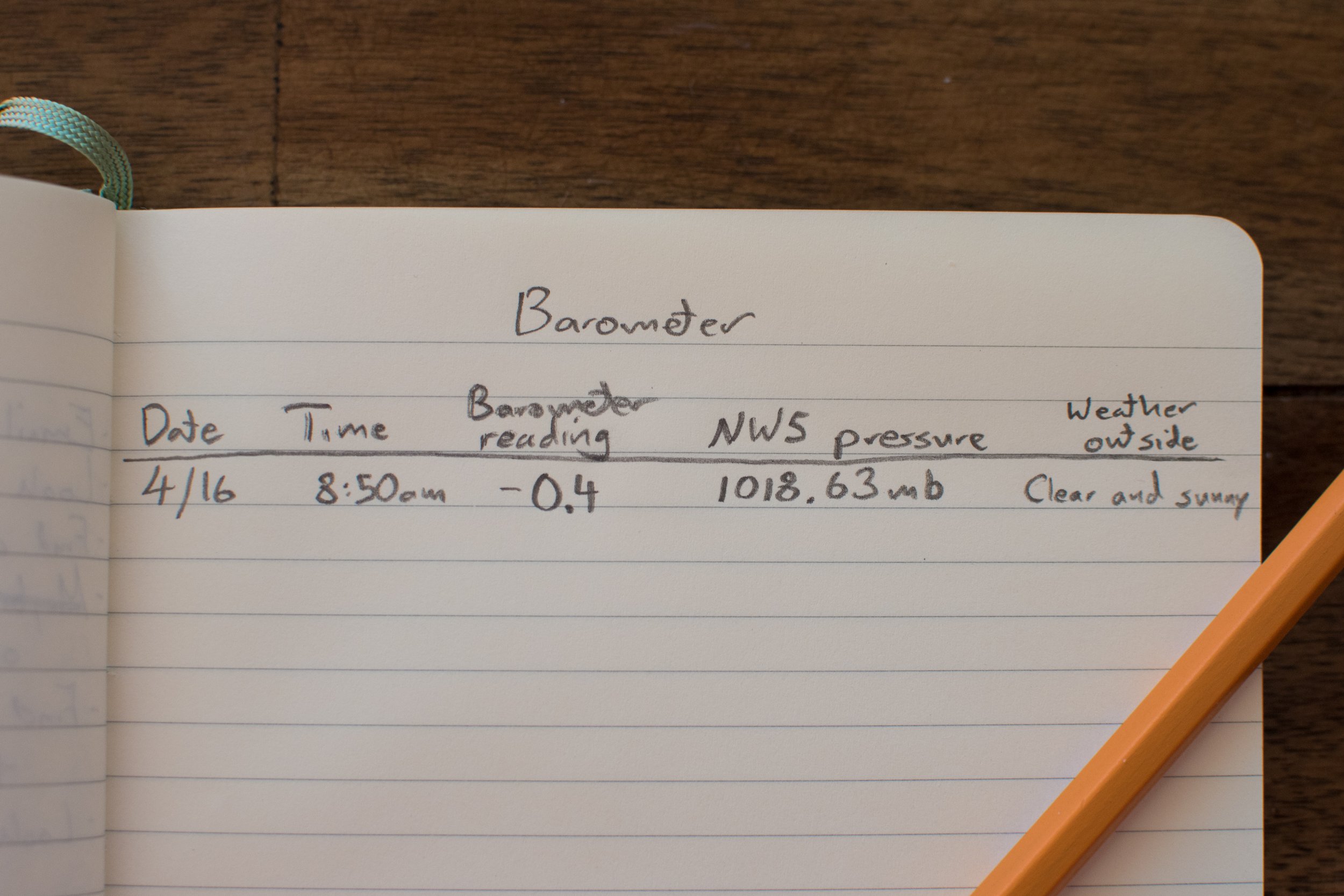
Build a Barometer
Explore the weight of the sky!
Barometers are one of the most useful tools a meteorologist has.
Barometers act as a scale for the sky. They can help us predict future weather. To build a barometer, you just need a handful of household things. Let’s get started!
What you need
Jar or can with an open top
Balloon
Rubber band
Straw
Tape
Piece of paper or cardboard
Pencil
Building a barometer
Step 1. Set your jar on the table. Make sure there’s no lid on it.
Step 2. Cut the narrow end off of the balloon. Put the balloon over the top of the jar, like a swim cap. The balloon should be tight and stretched as flat as possible, with no gaps for air. Put the rubber band around the top of the jar to hold the balloon in place (you may need some help to keep everything together!). If your balloon is too loose, or there are any gaps, remove the balloon and try again.
Step 3. Place the straw on top of the balloon so that the end of the straw goes about halfway across the balloon, with the rest of the straw sticking out to the side. Tape the straw to the balloon. The straw will be the dial that tells you whether pressure goes up or down.
Step 4. Attach a piece of stiff paper (like an index card) to the back of the jar with tape, so that it’s visible behind the straw. The paper will serve as reference, so that you can tell if the straw tilts up or down. If the straw goes past the end of the paper, you cut the end of the straw off to make a point.
Note: Make sure that the paper is attached with plenty of tape. It the paper starts to slip later on, it will affect your readings. Consider using a piece of paper that goes all the way from the bottom of the jar to the top, and sticks off to the side, to help with this.
Step 5. Draw a thick line on the paper where the end of the straw currently is. Draw more marks above and below this point, labeling them with positive numbers above and negative numbers below. This will let you measure how far the straw moves.
Your barometer is complete! To take a measurement, put your eye level with the top of the jar and determine where the end of the straw is. On the photo above, for example, the point of the straw is just below, giving a value of approximately -0.1.
If you’re having trouble with the index card, cut the front off a cereal box and set your barometer inside. Make some marks on the box near the straw to make your measurements.
Pressure takes a while to change, so you don’t need to check your barometer every minute. Instead, check it a couple times a day. If the end of the straw goes down, that means pressure is lower (which can bring rain!). If the end of the straw went up, that means the pressure is higher (which can bring sun).
Put your new barometer somewhere it won’t get knocked over, out of the sun, and keep reading below.
Keep a weather journal
It is useful (and fun!) to see how pressure changes each day. If the pressure starts to fall, you may have rain in your future. To keep track, start keeping a weather journal.
What to do: A few times a day, look at your barometer and make note of where the straw is. Keep track of the weather outside too, and whatever else you think might be important. Write your observations on a sheet of paper. Your weather journal might have the following things:
Date and time
Barometer measurement
National Weather Service pressure (from weather.gov) for comparison
The current weather outside (things like: clear, partly cloudy, overcast, raining, snowing, thunderstorm, etc.)
As you keep your weather journal, think about what you observe:
Do you notice any relationship between the pressure and the weather outside?
Do the changes on your barometer match the pressure changes from the National Weather Service, which you can find at weather.gov? Keep in mind: your barometer tell shows you relative changes, not the precise values, so don’t try to match numbers exactly. (Also, your barometer was made from household items, MacGyver-style, so your readings probably won’t match the official ones exactly.)
How does it work?
You might hear meteorologists on TV talking about “highs” and “lows”, which are areas of high or low pressure that move across the country and world.
On your barometer, no air can get in or out of the jar, so higher pressure outside will push the balloon down, making the other end of the straw rise (like a seasaw). On the other hand, low pressure will let the balloon rise, making the other end of the straw drop.
Often, high pressure is related to calm weather. Low pressure, on the other hand, can bring rain or storms. So if the end of the straw on your barometer starts to drop, check the forecast. There might be rain in your future!
Watch me put one together!
Want to see how it all comes together? Check out the video below.







